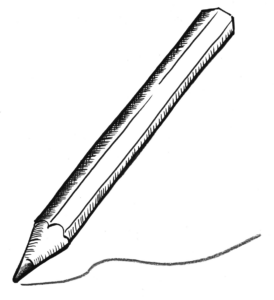What does a Product Manager do all day?
Posted By - Geoff Watts

One question I get asked a lot is “What does a Product Manager do all day?”. I actually get asked “What does a Product Owner do all day?” as well but, as you may have read in my previous article, What is a Product Manager?, I tend to prefer the term “Product Leader” I will use that term instead.
As a product leader, your job is to be the driving force behind the development and success of a product. You are responsible for the entire lifecycle of a product, from the initial concept phase to its eventual retirement. Your role is to be the link between the various groups within an organisation, including engineering, design, sales, marketing, and customer service, and to make sure that everyone is working together to achieve the product’s goals.

Every day is a balance of long-term and short-term
One of the key challenges of being a product is balancing the long-term strategic evolution of the product with the tactical need to deliver value and get feedback early. This means that product managers need to strike a balance between spending time with the development team to emerge solutions to user needs and spending time with other stakeholders to guide the future evolution of the product. They need to be able to think both strategically and tactically, and to be able to communicate effectively with stakeholders to build buy-in for their product.
There is no typical day for a Product Leader, but the typical things that a Product Leader could find themselves doing on any given day include:
Working with cross-functional teams to evolve the product
This could involve leading regular meetings with team members from different departments, such as engineering, design, and marketing, to work through potential options and solutions and make decisions about its development. Product Leaders might also lead brainstorming sessions to generate new ideas and to identify and resolve potential roadblocks.
Conducting market research and analysing data to inform product decisions
This could involve conducting surveys, conducting focus groups, or reviewing industry reports to gather information about customer needs and preferences. Listening is a key skill for all types of leadership and product leaders are no exception. Product Leaders may also use analytics tools to monitor the performance of similar products in the market and to identify trends that could inform their own product development.

Communicating (and Negotiating) with Stakeholders
Product Leaders need to speak to people to gather feedback and understand their needs. This could involve conducting user research, talking to customers directly, observing them in practice or reviewing feedback from customer service representatives. Product Leaders need to be able to understand the needs of different stakeholders and to communicate effectively with them to gather feedback and to build buy-in for their product.
In many cases this will involve balancing the potentially conflicting needs of different stakeholders, and this can take patience, diplomacy and empathy.
Refining the Product Backlog
This is a whole new post for another day but Product Leaders are unable to know the detail of the product backlog items in advance. If they spent all the time needed to understand everything about the future of the product, nothing would get done so focusing on elaborating the highest value needs of the users as and when they become most pressing is a commonly accepted good practice referred to as “backlog refinement”.
This involves discussion, exploration, optioning and solutionising. Techniques such as user story writing, paper prototyping, story mapping, impact mapping and customer interviews could be used to support this.
The general principle here is only to look at the items that are likely to be included in the next sprint only. Any other work is likely to be wasted effort and takes availability away from collaborating on the higher priority items we are delivering this sprint.
Monitoring and Analysing Product Performance
Product Leaders will use analytics tools to monitor the performance of their product (and also those of the competitors), and to identify areas for improvement. They will also review customer feedback and make changes to the product as needed. In a complex environment with lots of unknowns, Product Leaders are likely to be running multiple experiments to uncover data rather than attempt to predict outcomes.
One example of experiments is A/B testing to test different versions of the product and to identify which ones are most successful. Regular monitoring of the data, acting on that data and potentially tweaking experiments and data being captured is a common focus of Product Leaders.

It’s not a one-person job
While the most effective Product Leaders are clearly the person directing the development of the product, they can’t do it on their own.
Firstly it’s impossible for one person to know everything about the product and domain to do everything themselves (even a pencil is too complicated for one person to create by themselves!).
Secondly, product evolution requires engagement from customers (in terms of providing feedback on iterative deliveries) and the development team (in terms of creatively solving complex problems) among others.
And thirdly, there simply isn’t enough time for one person to do all that needs to be done so some aspects will need to be delegated if the Product Leader is not to burn out.
This is why we encourage Product Leaders to create and evolve a Product Owner Team which we will explain more about in a separate post.
Is Product Management a Good Job?
Another question I get asked is whether Product Management is a good job. Personally I think it’s amazing. Yes, it’s a challenging and fast-paced role that requires excellent communication, problem-solving, and leadership skills. It’s demanding in terms of time and energy and you will often feel like there aren’t enough hours in the day or days in the week.
But it’s also incredibly rewarding, as you have the opportunity to make a real impact on real people, making their working and/or personal lives better, less painful, less frustrating and increasing their fulfilment and success.
If you’re interested in becoming a Product Leader, it’s important to gain a strong understanding of the industry and the specific product you’ll be working on. This can be achieved through training, mentorship, and experience. By developing your skills and knowledge, you’ll be better equipped to take on the challenges of this dynamic and ever-changing role.
So, if you’re looking for a career that offers a unique blend of strategy, creativity, and leadership, product management might be the perfect fit for you. With the right product management training and experience, you can be on your way to making a real difference in the world of product development.





